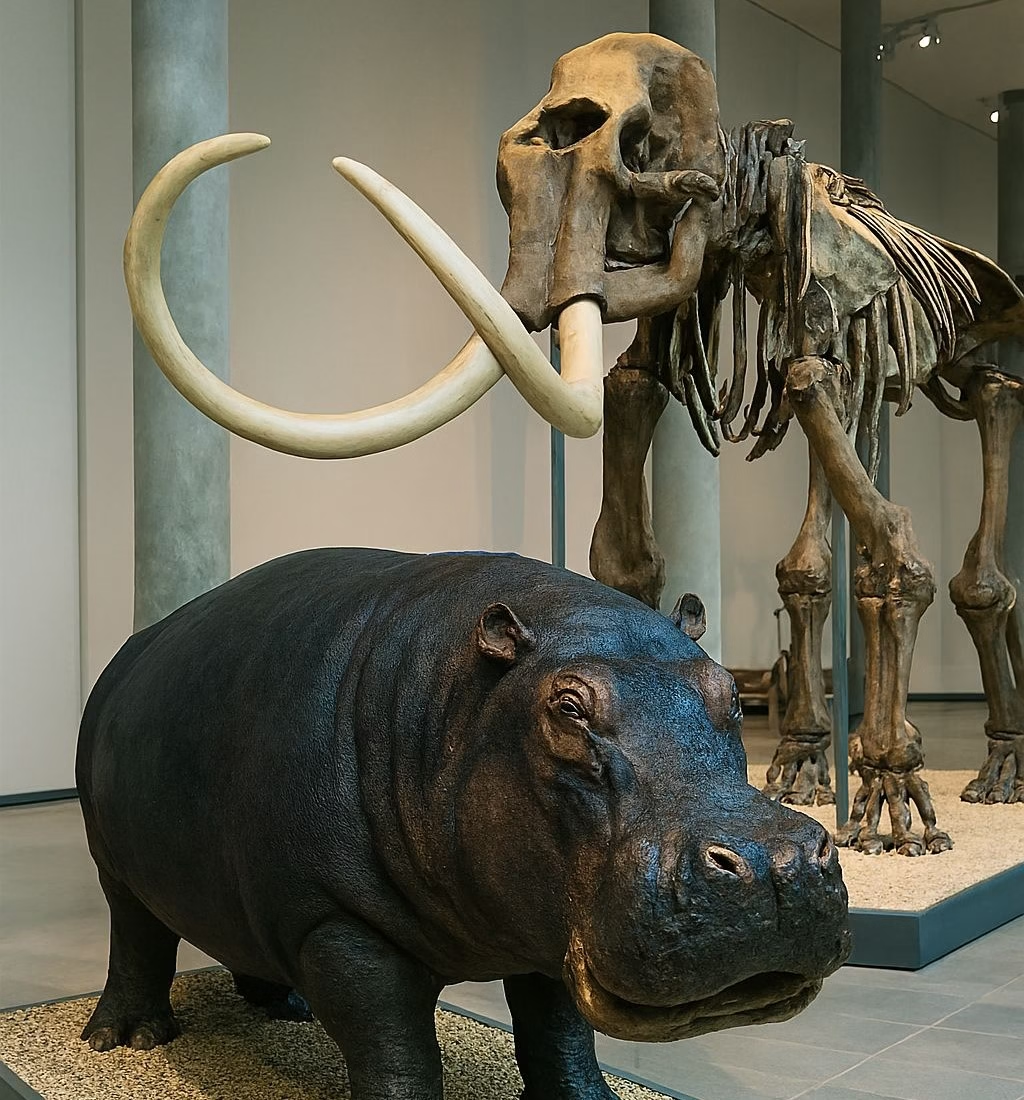You might be surprised to learn that hippos once lived in Europe not just during warm periods, but right in the middle of the Ice Age! But new research turns that idea on its head. Scientists have discovered that hippos lived in Germany’s Upper Rhine valley between about 49,000 and 31,000 years ago right in the thick of the last Ice Age. This challenges long-held beliefs about where and when hippos roamed and highlights how the environment of Ice Age Europe was more diverse than we imagined.
Changing the Timeline
For decades, scientists assumed that hippos only lived in Europe during the Eemian interglacial period roughly 129,000 to 115,000 years ago when the climate was warmer and more welcoming for such large, heat-loving animals. However, new radiocarbon dating of hippo remains found near Mannheim and Mainz in Germany shows that these massive mammals were still around during much colder times, dating to the last Ice Age (between 49,000 and 31,000 years ago). This means hippos were surviving in Europe tens of thousands of years later than thought, in conditions previously believed to be too harsh for them.

a visual representation of that ancient jaw fragment, preserved through tens of thousands of years and now housed in the Reiss-Engelhorn-Museen. (CREDIT: Microsoft Copilot)
Ancient DNA Reveals the Truth
An international research team, coordinated by scientists from the University of Potsdam and the Reiss-Engelhorn-Museen Mannheim, took this research even further. They successfully extracted and sequenced the first complete paleogenome the ancient DNA of a European Ice Age hippo. Their study, published in the journal Current Biology, confirmed that these European Ice Age hippos were the same species as the modern-day hippos living in African rivers today. This finding shows the species’ incredible adaptability and resilience through dramatic climate changes.
What This Tells Us About Ice Age Europe
The fact that hippos could survive during colder periods reveals that Ice Age Europe wasn’t just a frozen wasteland. Instead, river valleys and wetlands provided enough warmth and food for species like hippos to thrive. This discovery suggests pockets of biodiversity and environmental variation existed, allowing certain animals to adapt or persist outside their expected ranges.
Why This Matters
These insights reshape how we understand climate change’s impacts on animal life in Earth’s past. Hippos serve as a fascinating example of how species can survive changing climates, teaching us important lessons about resilience and adaptability. Moreover, this study highlights the power of ancient DNA research. While fossils alone can tell us what creatures looked like or where they lived, DNA allows scientists to trace relationships, migrations, and survival strategies in far greater detail.
References:
- Welker, F. et al. (2025). The first European hippo paleogenome reveals Ice Age survival of Hippopotamus amphibius in Central Europe. Current Biology, 35(10), 2003-2010.
- University of Potsdam Press Release (2025). Ancient DNA pushes back hippo survival in Europe to the last Ice Age.
- Reiss-Engelhorn-Museen Mannheim (2025). Hippos in Ice Age Germany: New insights from fossils and genetics.
In Summary
The discovery that hippos lived in Ice Age Europe rewrites a part of natural history, showing us that these remarkable animals survived and adapted through periods far colder than we imagined. It’s a reminder that Earth’s past ecosystems were full of surprises and there’s still so much we have to learn

